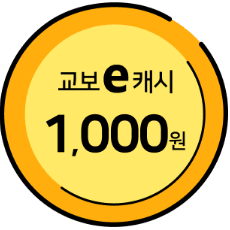Multimodal Reading Strategies in Native and Advanced L2 Korean Speakers: An Eye-Tracking Study of Text, Image, and Auditory Integration
이용수 0
- 영문명
- 발행기관
- 한국언어청각임상학회
- 저자명
- 임우열(Wooyeol Lim)
- 간행물 정보
- 『Communication Sciences & Disorders』vol29. no.4, 811~829쪽, 전체 19쪽
- 주제분류
- 사회과학 > 교육학
- 파일형태
- 발행일자
- 2024.12.31
구매일시로부터 72시간 이내에 다운로드 가능합니다.
이 학술논문 정보는 (주)교보문고와 각 발행기관 사이에 저작물 이용 계약이 체결된 것으로, 교보문고를 통해 제공되고 있습니다.

국문 초록
영문 초록
목차
키워드
해당간행물 수록 논문
- AI-생성동화를 활용한 개별 맞춤형 책읽기 활동이 미취학 아동의 어휘 학습에 미치는 영향
- 학령전 언어발달지연 아동의 형태통사 단서를 활용한 동사 의미 추론
- 음운, 철자, 형태의미능력을 고려한 취학전 읽기고위험군 아동의 잠재프로파일 분석
- Multimodal Reading Strategies in Native and Advanced L2 Korean Speakers: An Eye-Tracking Study of Text, Image, and Auditory Integration
- 원발진행실어증 환자의 세 아형별 발화 위치에 따른 쉼 특성
- 편측성 난청 성인의 인공와우이식 전과 후의 경험: 현상학적 질적 연구
- 일반 노인의 이야기 회상 수행력: 자극 양식, 연령 집단 및 수행 시점에 따른 차이
- 언어장애 동반 유무에 따른 말소리장애 아동의 음운기억 과제 수행 특성
- 정상압수두증과 파킨슨병 환자의 이야기 정보인출 수행력
- 뇌성마비 아동의 삼킴 기능에 따른 섭식과 조음능력 연구
- 청각장애 대학생의 의사소통 경험 탐색
- Voice Therapy Method for Post-Thyroidectomy Syndrome
- 말을 더듬는 사람의 말 운동 능력에 대한 메타분석 연구
- 내러티브 기반의 집단 언어중재 프로그램이 일대일 및 발표 상황에서 청각장애 아동의 경험 이야기 산출 능력에 미치는 효과
- RSVP 패러다임을 사용한 통사적 복잡성과 제시속도 조절이 노인성 난청의 문장이해에 미치는 영향
- 기계학습을 활용한 영유아 온라인 언어 선별검사의 응답 성실도 탐지 연구
- 시선추적을 활용한 학령전기 단순언어장애 아동과 일반 아동의 이야기 추론 이해 및 오류 유형 비교
- 형태처리기반 용언활용 중재가 경계선급 지적기능성 아동의 철자쓰기 정확도에 미치는 효과
- 경계선급 지적 기능성 아동의 언어치료에 대한 언어재활사의 인식
- 다문화 언어발달장애 아동을 위한 비구어 실행기능의 임상적 진단 가능성 탐색
- 종단적 관찰을 통해 살펴본 초등 저학년 발달성 난독 아동 예측 요인
- 학령기 고기능 자폐스펙트럼장애 아동의 운율 및 의미 일치성에 따른 정서인식 특성
- 초등 학령기 아동의 쓰기 작문을 예측하는 언어, 읽기 및 음운처리 능력
- 어순 전형성이 노년층의 자기조절읽기 기반 실시간 관형절 처리 능력에 미치는 영향
- 정보단위 분석을 통한 일반 노인의 이야기 다시 말하기 능력과 이름대기 및 기억능력의 상관
참고문헌
관련논문
사회과학 > 교육학분야 BEST
더보기사회과학 > 교육학분야 NEW
- 일반 노인의 이야기 회상 수행력: 자극 양식, 연령 집단 및 수행 시점에 따른 차이
- 언어장애 동반 유무에 따른 말소리장애 아동의 음운기억 과제 수행 특성
- 정상압수두증과 파킨슨병 환자의 이야기 정보인출 수행력
최근 이용한 논문
신규가입 혜택 지급이 완료 되었습니다.
바로 사용 가능한 교보e캐시 1,000원 (유효기간 7일)
지금 바로 교보eBook의 다양한 콘텐츠를 이용해 보세요!


